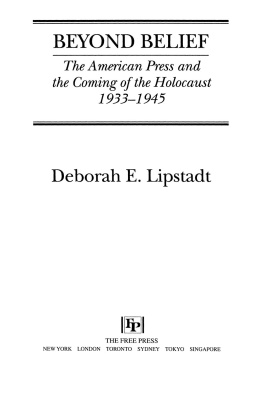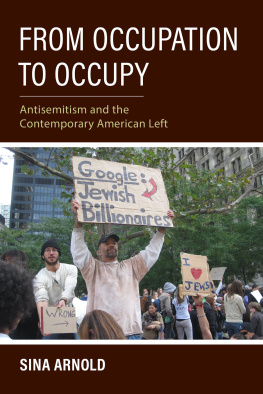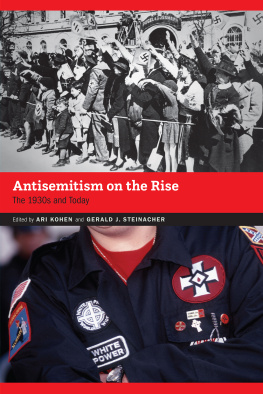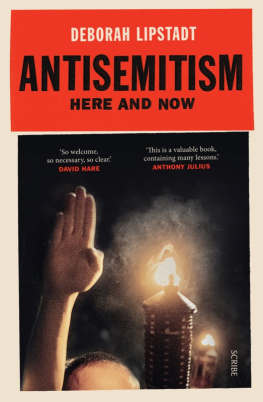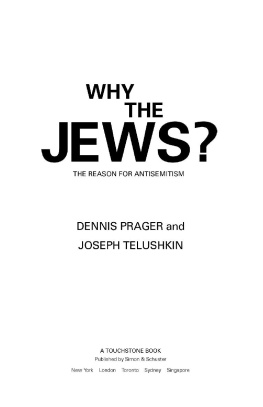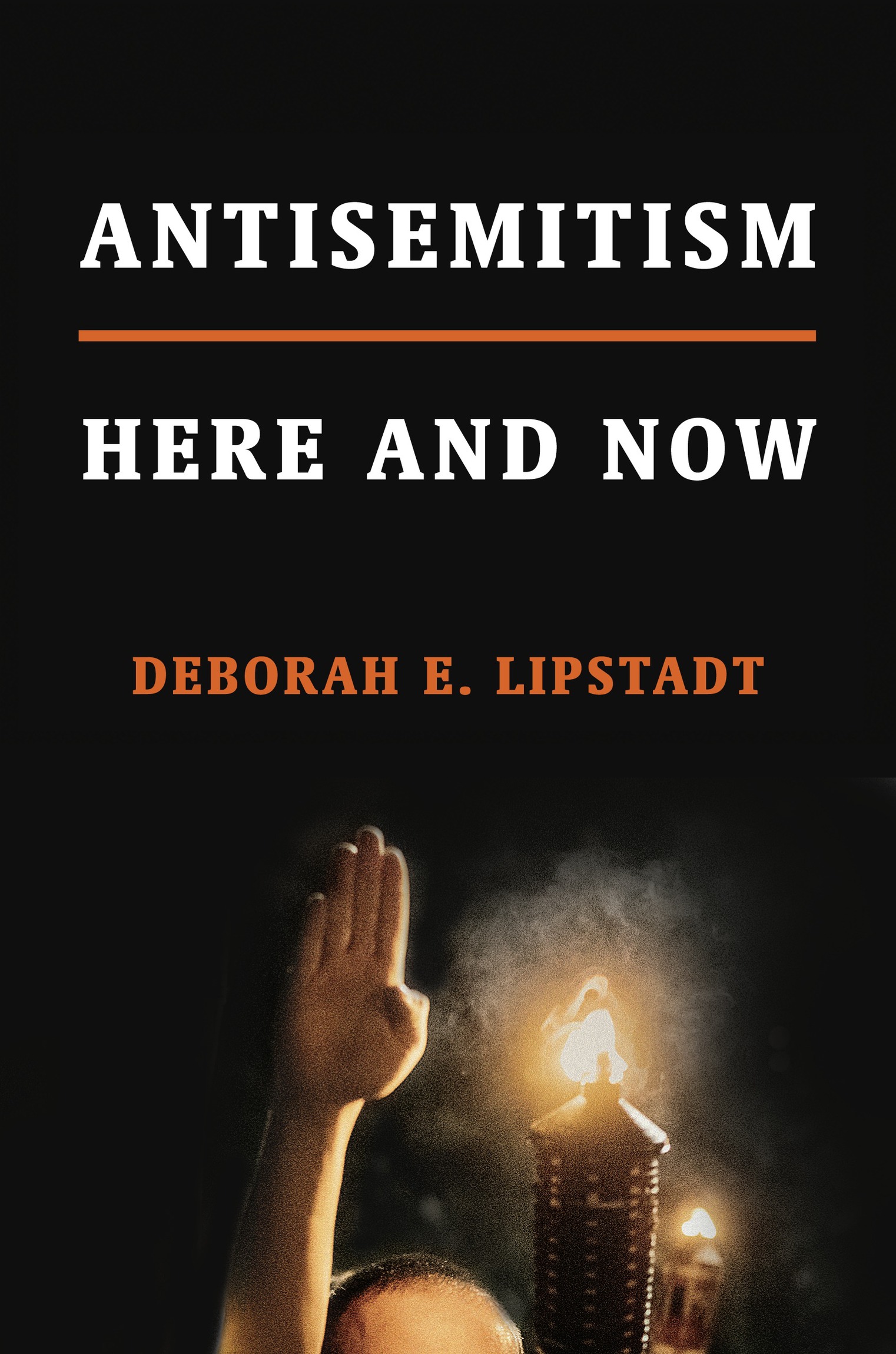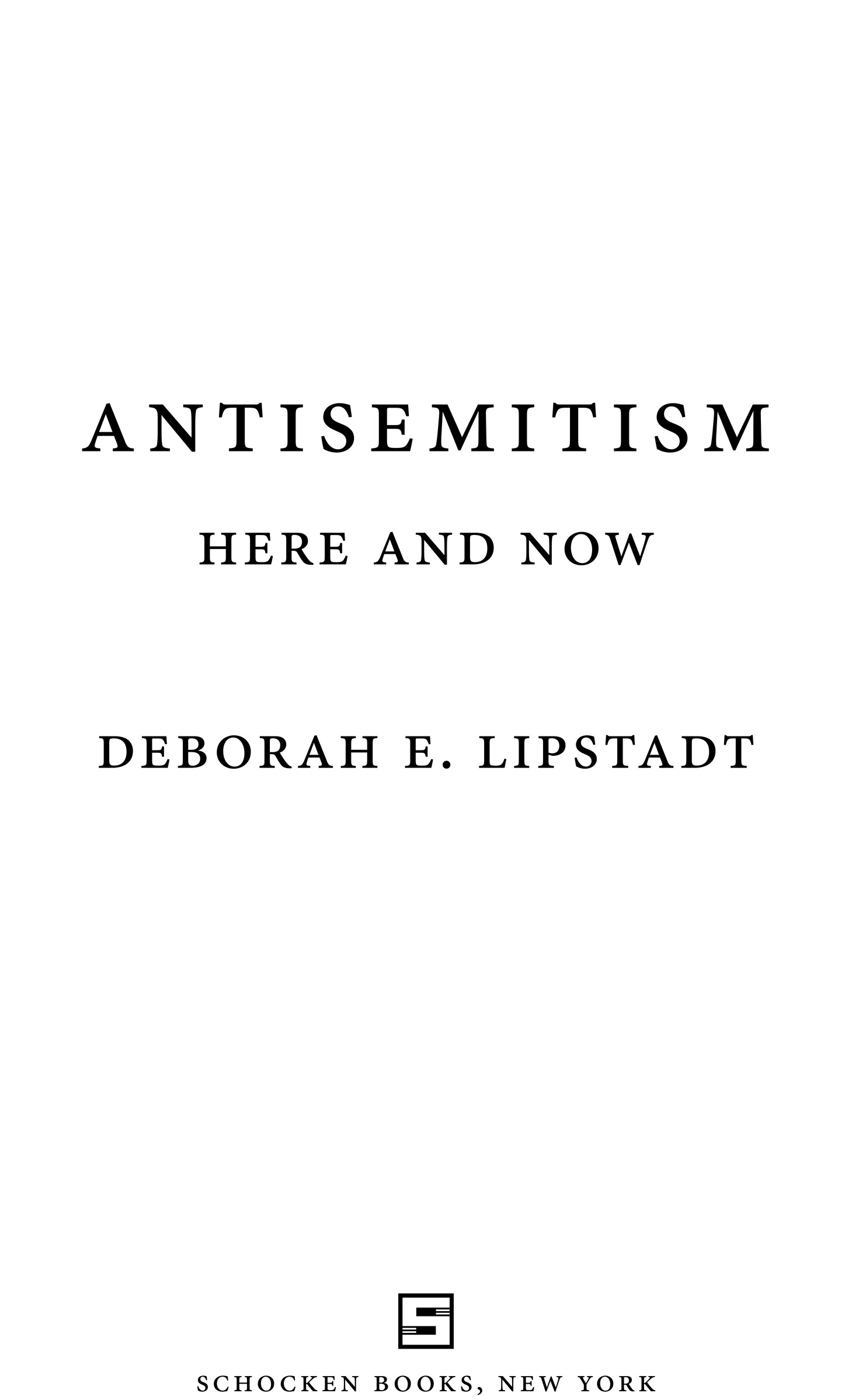B OOKS BY D EBORAH E . L IPSTADT
Beyond Belief: The American Press and the Coming of the Holocaust, 1933 1945
Denying the Holocaust: The Growing Assault on Truth and Memory
Denial: Holocaust History on Trial
The Eichmann Trial
Holocaust: An American Understanding
Copyright 2019 by Deborah E. Lipstadt
All rights reserved. Published in the United States by Schocken Books, a division of Penguin Random House LLC, New York, and distributed in Canada by Random House of Canada, a division of Penguin Random House Canada Limited, Toronto.
Schocken Books and colophon are registered trademarks of Penguin Random House LLC.
Library of Congress Cataloging-in-Publication Data
Name: Lipstadt, Deborah E., author.
Title: Antisemitism : here and now / Deborah E. Lipstadt.
Description: First edition. New York : Schocken, 2019. Includes index.
Identifiers: LCCN 2018026535. ISBN 9780805243376 (hardback). ISBN 9780805243383 (ebook).
Subjects: LCSH : AntisemitismHistory21st century. BISAC: POLITICAL SCIENCE/Political Freedom & Security/Human Rights. POLITICAL SCIENCE/Political Freedom & Security/Terrorism. SOCIAL SCIENCE/Violence in Society.
Classification: LCC DS 145 . L 6157 2019 | DDC 305.892/40905dc23 | LC record available at lccn.loc.gov/2018026535
Ebook ISBN9780805243383
www.schocken.com
Cover design by Kelly Blair
v5.4
ep
To the memory of my mother, Miriam bat Natanel and Rebecca.
God was her refuge and her fortress (Psalm ).
She was my greatest fan.
Contents
A N OTE TO THE R EADER
This has been a challenging project. I was surprised by the difficulties I encountered in writing this book, for it was hardly my first foray into addressing painful topics. I have been writing, teaching, and speaking about the Shoah, one of the most all-encompassing examples of state-sponsored genocide, for decades. Given that I have already spent so much of my scholarly and personal time skulking in the sewers of antisemitism and genocide, why should this project have been any different from the many others that preceded it? The answer became clear as I wrote. As horrific as the Holocaust was, it is firmly in the past. When I write about it, I am writing about what was. Though I remain horrified by what happened, it is history. Contemporary antisemitism is not. It is about the present. It is what many people are doing, saying, and facing now. That gave this subject an immediacy that no historical act possesses.
But it is not just about the present. It is also about the future. Where are the troubling phenomena addressed here leading? And that question points to yet another difficulty. Most historians avoid speculating about the future. We eschew predictions because we know how quickly things can change. Often, those historians who have relied on their knowledge of the past to prognosticate have erred. And yet, when one writes about a contemporary problem, it is hard not to predict. Aware of this, I try very hard in this book to avoid doing so. After addressing some basics of the issuedefining antisemitism, categorizing the antisemite, and figuring out how best to spell the wordI try to unpack what it is we are witnessing. Is todays antisemitism the same or different from what we have seen before? Where is it coming from: the right or the left? Is it, as some would contend, all about Israel? Are we seeing antisemitism where it is not? Are others refusing to see antisemitism where it clearly is?
While there seems to have been a decided increase in both physical acts and rhetorical expressions of antisemitism in recent years, our conversation should not be rooted in or motivated by numbers or by antisemitic acts. This would suggest that, if the numbers decrease, our worries should abate. I remember that during the 2000 American presidential campaign many Jews predicted that Al Gores selection of Joseph Lieberman as his running mate would precipitate a rise in antisemitism. It didnt happen. Some pundits then opined that perhaps antisemitism was dead. They looked at the American social landscape and saw Jewish presidents presiding over universities that once had strict quotas. They saw Jews sitting on the boards of major corporations and being elected to public office from regions without a significant Jewish population. Even the skyrocketing rate of intermarriage, a source of angst within the Jewish community, could be spun into something positive. If so many non-Jews are so willing to have Jews in their families, how prevalent could antisemitism be? But today, antisemitism is back. (I am not sure it ever really went away.) An accurate accounting of the uptick in antisemitic incidents is important because it does provide necessary empirical evidence. Nonetheless, numbers should not be what drive us. What should alarm us is that human beings continue to believe in a conspiracy that demonizes Jews and sees them as responsible for evil. Antisemites continue to give life to this particular brand of age-old hatred. They justify it and the acts committed in its name. The historical consequences of this nefarious passion have been so disastrous that to ignore its contemporary manifestations would be irresponsible.
Another reason numbers should not drive us is that antisemitism is a worldview, a conspiracy theory. It therefore cannot simply be measured by the number of recorded antisemitic acts or by the number of people being categorized as antisemites. A recent study in Great Britain called the approach I have taken the elastic view of antisemitism. If Jew-hatred is an attitude, it exists, like all attitudes, in society at different levels of intensity, and with different shades to it.Some people may be strongly antisemitic, others less so; and while still others may not fit into either of these categories, they may still hold certain [antisemitic] attitudeseven if these are small in number and weak in intensity.
Since antisemitism affects Jews, some readers may be inclined to think that only Jews should be concerned. That would be a mistake. Jews, as the intended target of the antisemite, may indeed be more sensitive to it. Such is the case with any expression of particular hatred and prejudice. But the existence of prejudice in any of its forms is a threat to all those who value an inclusive, democratic, and multicultural society. It is axiomatic that if Jews are being targeted with hateful rhetoric and prejudice, other minorities should not feel immune; this is not likely to end with Jews. And, conversely, if other minority groups are being targeted with hatred and prejudice, Jews should not feel immune; this is not likely to end with these groups, either. Antisemitism flourishes in a society that is intolerant of others, be they immigrants or racial and religious minorities. When expressions of contempt for one group become normative, it is virtually inevitable that similar hatred will be directed at other groups. Like a fire set by an arsonist, passionate hatred and conspiratorial worldviews reach well beyond their intended target. They are not rationally contained. But even if the antisemites were to confine their venom to Jews, the existence of Jew-hatred within a society is an indication that something about the entire society is amiss. No healthy society harbors extensive antisemitismor any other form of hatred.


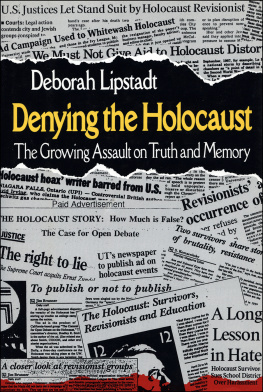
![Deborah E. Lipstadt - Denial [Movie Tie-in]: Holocaust History on Trial](/uploads/posts/book/373085/thumbs/deborah-e-lipstadt-denial-movie-tie-in.jpg)
